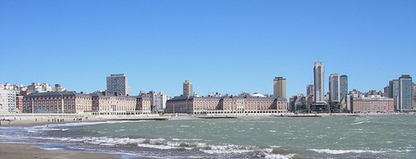

This course aims at introducing the students to the basic notions of homological algebra, approached first from an elementary viewpoint using derived functors and then using the notion of triangulated category and derived category. We start with a review of functors and categories including several examples and emphasizingthe definitions of kernel and cokernel, product and coproduct, as well as the notions of right and left exact functors. Then we will talk about additive categories, the category of complexes of an additive category and the corresponding homotopy category. This will give rise to the notion of derived category.
The objective of the course is to introduce basic notions and results of the representation theory of algebras, with particular emphasis in the functorial techniques introduced by Maurice Auslander. This approach has played a fundamental role in the representation theory of finite dimensional algebras and, more generally, of artin algebras.
In the first lecture we shall present some important facts from
homological algebra.
In the second lecture we introduce some fundamental concepts such as
irreducible morphisms and almost split sequences.
The third lecture will include the following concepts: the
Auslander-Reiten translation, the Auslander-Reiten formula and the
Auslander-Reiten quiver which is an important combinatorial and
homological invariant of the module category of finitely generated
modules of an algebra.
In the last lecture we shall present old and new results on the number
of terms in the middle of an almost split sequence in the module
category of a finite dimensional algebra.
The intention of these lectures is to serve as a source of motivation
and information on the main concepts, techniques and results on the
Auslander-Reiten theory.
Lecture notes.
Cluster algebras are commutative algebras with a special combinatorial
structure. A cluster algebra is a subalgebra of a field of rational
functions in several variables, which is defined by constructing a
specific set of generators in a recursive way.
This course will focus on an important class of cluster algebras,
those that are associated to surfaces with boundary and marked
points. The generators of these cluster algebra are in bijection with
certain curves in the surface and the combinatorial structure of the
cluster algebra can be explained in terms of triangulations of the
surface.
In the simplest example, a regular polygon with n vertices, the
generators of the cluster algebra correspond to the diagonals of the
polygon.
The first class will be on general cluster algebras, and the following
three classes on cluster algebras from surfaces. I plan to cover the
following list of topics. Cluster algebras, definition and results,
cluster algebras from surfaces, definition, examples, relation to
representation theory, combinatorial expansion formulas, canonical
bases, and if time permits upper cluster algebra, skein relations,
snake graph calculus.
Lecture notes